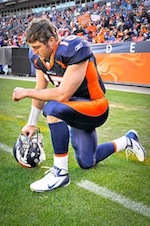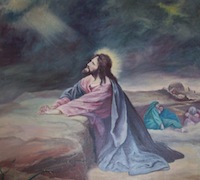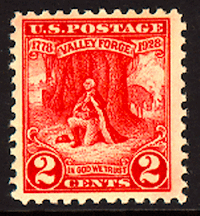
 The advent of the Christian Holy Week seems a good time to examine the origins and significance of the namesake pose for the New York Jets new backup quarterback. It is the case especially this year, when the lunar calendar coincides with that of the New Testament gospels so that the Jewish Passover Seder falls just one day after Good Friday Eve almost as occurred 2012 years ago: An on-time Last Supper.
The advent of the Christian Holy Week seems a good time to examine the origins and significance of the namesake pose for the New York Jets new backup quarterback. It is the case especially this year, when the lunar calendar coincides with that of the New Testament gospels so that the Jewish Passover Seder falls just one day after Good Friday Eve almost as occurred 2012 years ago: An on-time Last Supper.
An insatiable fire of demand for pretty much any information and insight leading up to Mr. Tebow's season debut late this summer (when, with any luck, his actual performance on the field will draw the media spotlight) requires constant stoking. Why not add to the daily buzz with an historical peek at the basic kneel that he has come to own, and take stock of why it resonates in America's collective unconscious -- among co-religionists or otherwise? What are its antecedents and why such a visceral pull?
 To the extent that anyone has so far made mention of Tim's stance, the reference is to Auguste Rodin's 1902 casting of Le Penseur aka The Thinker. True enough, as per the upper torso with its oft-posited reference to Dante contemplating man's fate on the verge of the Inferno. If not that subject exactly, nonetheless the point is made.
To the extent that anyone has so far made mention of Tim's stance, the reference is to Auguste Rodin's 1902 casting of Le Penseur aka The Thinker. True enough, as per the upper torso with its oft-posited reference to Dante contemplating man's fate on the verge of the Inferno. If not that subject exactly, nonetheless the point is made.
The Thinker's head with furrowed brow and half-mast eyes signaling deep reflection is cradled on the upper side of his right hand of the knee-supported forearm, which is in turn poised contraposto across to the left knee. The trouble is that all that upper body action takes place while seated on a rock-like outcropping, so it's at best half of the Tebow tableau.
Despite their prodigious output, the sculptors of Greece and their Roman copiers did not include kneeling in the formal repertoire. For starters, prayer and devotion to the pantheon of Gods took place standing up with at most a nod or bow.
It's not until the Christians arrived (and later the Muslims) that submission to a single God really started from the knee on up -- whether to beseech or thank or, better still, to accomplish both simultaneously -- always with an eye on the passage of time: favors and thanksgiving in seamless act of worship.
 And here the image that really sets this enduring tradition in Western man's eye is Jesus in the garden of Gethsemane, following his last Seder as recorded by Luke, Mark and Matthew. At the foot of the Mount of Olives in Jerusalem --within view of the very cross on which he will soon depart earthly existence -- he asks his disciples to keep watch and not to give in to temptation in preparing to spread his good news of faith and redemption. And above all he kneels to pray for the strength required in the uncertain hours of revelation soon at hand.
And here the image that really sets this enduring tradition in Western man's eye is Jesus in the garden of Gethsemane, following his last Seder as recorded by Luke, Mark and Matthew. At the foot of the Mount of Olives in Jerusalem --within view of the very cross on which he will soon depart earthly existence -- he asks his disciples to keep watch and not to give in to temptation in preparing to spread his good news of faith and redemption. And above all he kneels to pray for the strength required in the uncertain hours of revelation soon at hand.
For Americans it was a propagandistic conflation that yielded the fabled image of George Washington off alone praying in the woods on the eve of the American Revolution's tactical turning point at Valley Forge in the crucible year of 1777. The Father of the Country, like the Lord himself, alone in communion with God the Father. A 1928 postage stamp brought to mailboxes what books and periodicals had long reproduced as founding metaphor of "one nation under God," delivered by providence personified as a shining city on a hill.
 Tebow descends, therefore, from this fine pedigree even as his particular kneel is different still. What he does is strike a static one-kneed genuflection like that deployed by Roman Catholics when beholding the Eucharist and combines it with the evident prayer of the bowed head and the more secular, muscular introspection of the cradling right arm.
Tebow descends, therefore, from this fine pedigree even as his particular kneel is different still. What he does is strike a static one-kneed genuflection like that deployed by Roman Catholics when beholding the Eucharist and combines it with the evident prayer of the bowed head and the more secular, muscular introspection of the cradling right arm.
It is as unique as it is familiar, redolent with the customs of Christianity that America perhaps more than any nation on earth has brought out of the tabernacle and into the fields of daily labor regardless of the task at hand.
Holy week fixed the tradition and Tebowing keeps it current. It's just one more detail that transfixes the watching public and their hopes for providence to come.